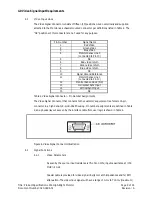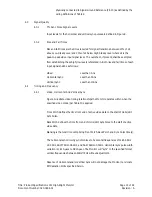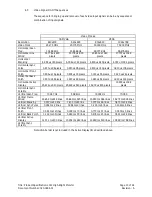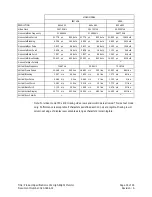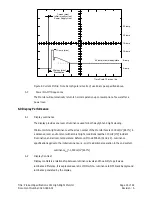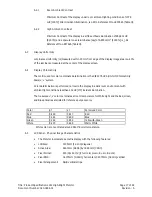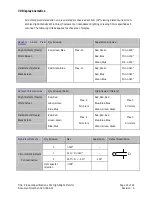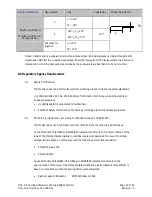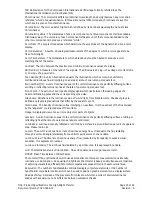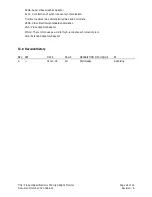
Title: Product Specification: LC12 High-Bright Monitor
Page 23 of 24
Document Number: 023-0284-01
Revision: A
CIE: Abbreviation for the Commission Internationale de l'Eclairage, formerly referred to as the
International Commission on Illumination (ICI).
Chrominance: The colormetric difference (dominant wavelength and purity) between any color and a
reference "white" of equal luminance. In three-dimensional CIE color space, chrominance is a vector
which lies in a plane of constant luminance.
Chromaticity: The color quality of light which is defined by its dominant wavelength and purity (see
Chrominance).
Chromaticity Value: The scalar value of any one component of a three-component color (also called a
tristimulus value). The unit value of each component is the amount of that component added to the
other two components to produce a reference "white".
Color Data: The programmed values which determine the amplitudes of the signal which drive a color
display.
Color Saturation: A psycho-physiological measurement of the degree to which a color appears to be
free of white light.
Color Temperature: The temperature to which a black body must be heated to produce a color
matching that of the source.
Contrast: The ratio between the maximum and minimum luminance values of a display.
dB (Decibel): A measure of the ratio of two signals. The dB value is 20 x log
10
of a voltage or current ratio
or 10 x log
10
of a power ratio.
Foot-Candle [fC]: A unit of illumination equal to the illumination which occurs when uniformly
distributed luminous flux is impinging on an area at a rate of one lumen per square foot.
Foot-Lambert [fL]: A unit of luminance equal to the uniform luminance of a perfectly diffusing surface
emitting or reflecting luminance flux at the rate of one lumen per square foot.
Front Porch: The portion of a composite display signal which lies between the leading edges of a
horizontal blanking pulse and the corresponding sync pulse.
Gray Scale: Variations in the luminance value of "white" light, from black to white. Shades of gray are
defined as gray-scale graduations that differ by the square root of 2.
Illuminance: The density of luminance flux impinging on a surface. It is the quotient of the flux divided
by the "apparent" or projected area of the surface.
Image: A displayed view of one or more objects or parts of objects.
Lambert: A unit of luminance equal to the uniform luminance of a perfectly diffusing surface emitting or
reflecting light at the rate of one lumen per square centimeter.
Luminance: Luminous intensity reflected or emitted by a surface in a given direction per unit of apparent
area. Measured in nits.
Lumen: The unit of luminous flux or rate of luminous energy flow. It is equal to the flux radiating
through a unit solid angle (steradian) from a uniform point source of one candela.
Luminous Flux: The time rate of luminous energy flow, measured by its capacity to evoke a visual
sensation. It is expressed in lumens.
Luminous Intensity: The luminous flux radiated by a point source. It is expressed in candela.
LUX: The international unit of illumination. One LUX equals one lumen per square meter.
MTBCF: Mean Time Between Critical Failure
Photometer???Any optical device which uses a comparison technique to measure luminous intensity,
luminance, or illumination. An equality-of-brightness photometer is based on simultaneous comparison
of adjoining visual areas; a flicker photometer compares successive stimuli in the same visual area.
Resolution: The number of addressable, controllable display or picture elements, or the number of
hypothetical coordinate locations which can be used to position graphic elements on a display surface.
Shades of Gray: A division of the gray scale from black to white into a series of discrete luminance
shades with a square-root-of-2 difference between successive shades.

